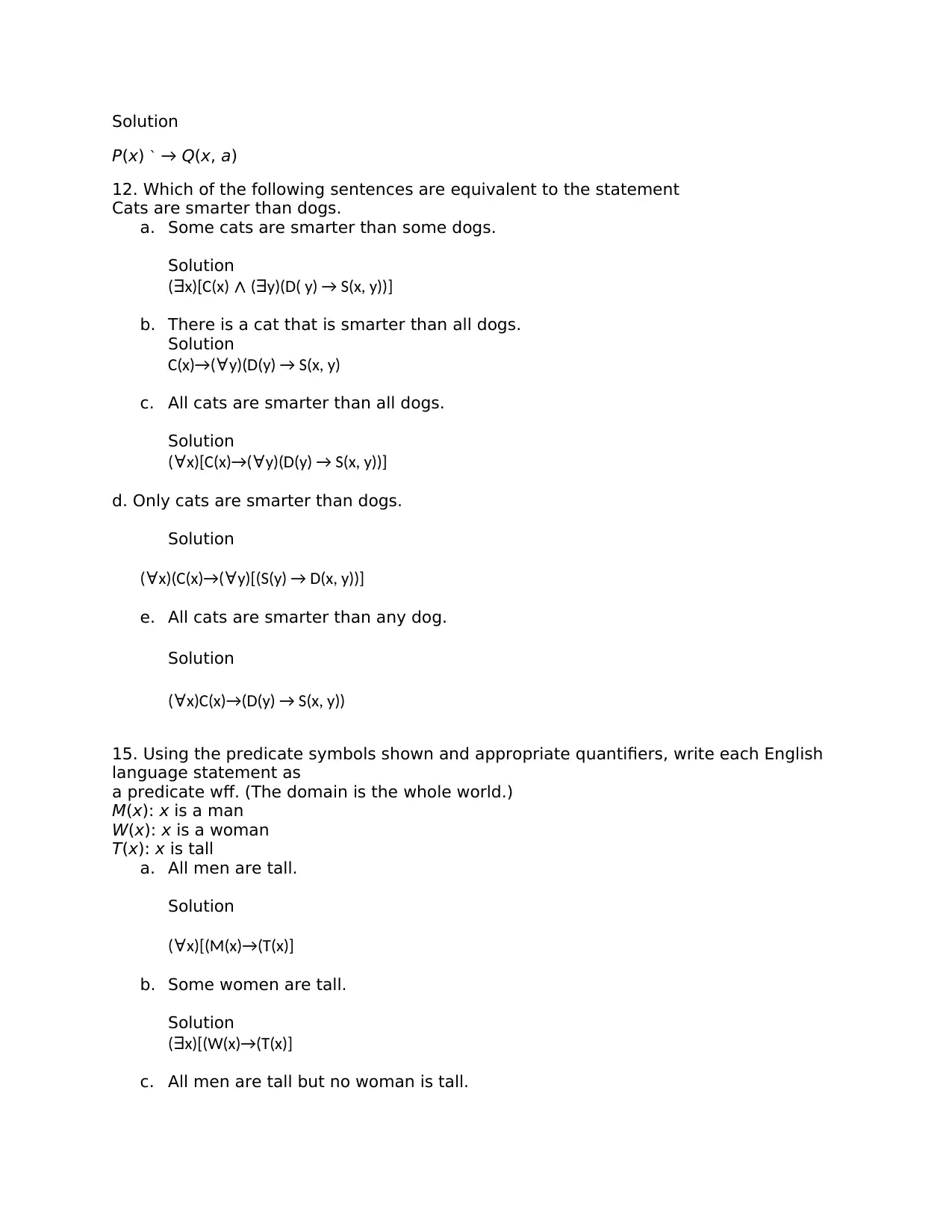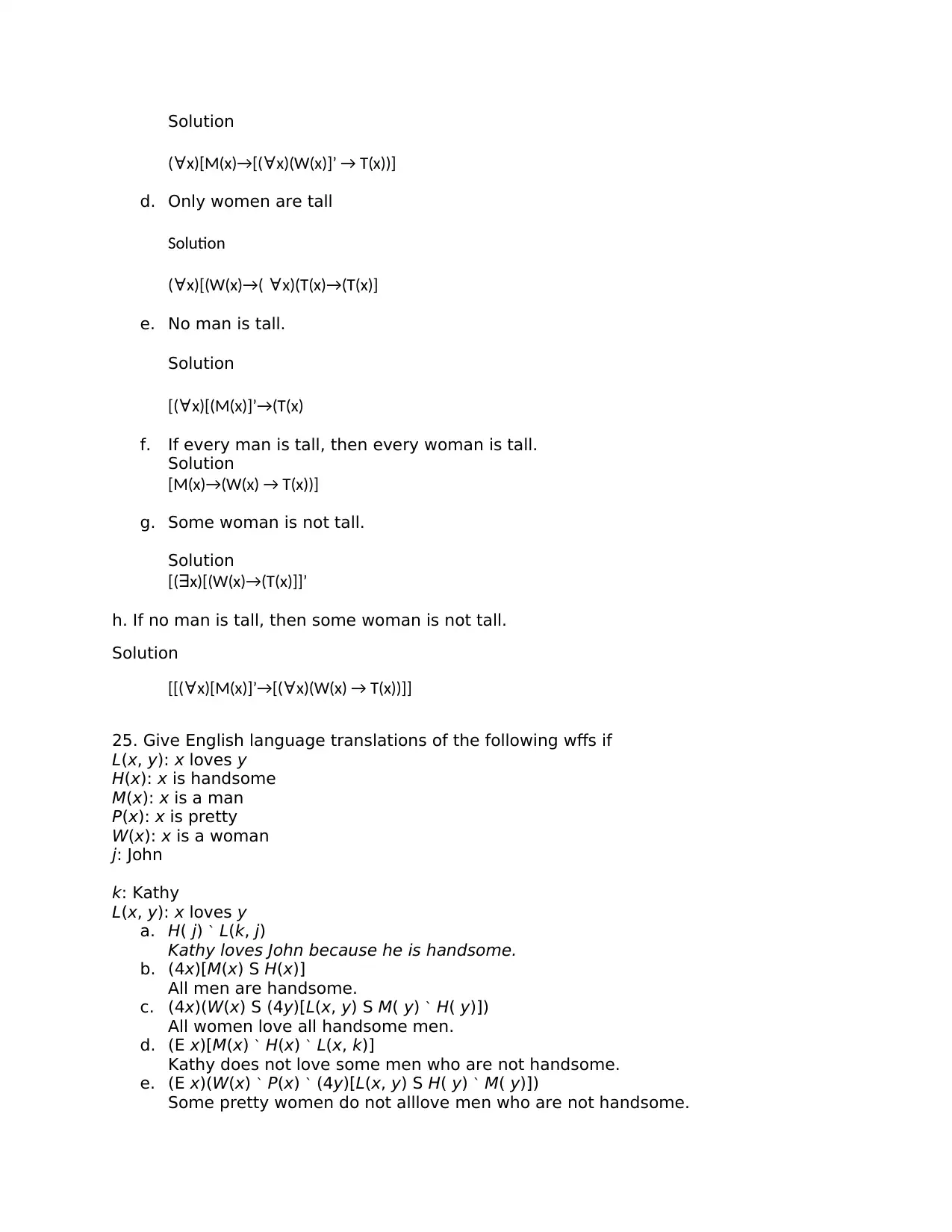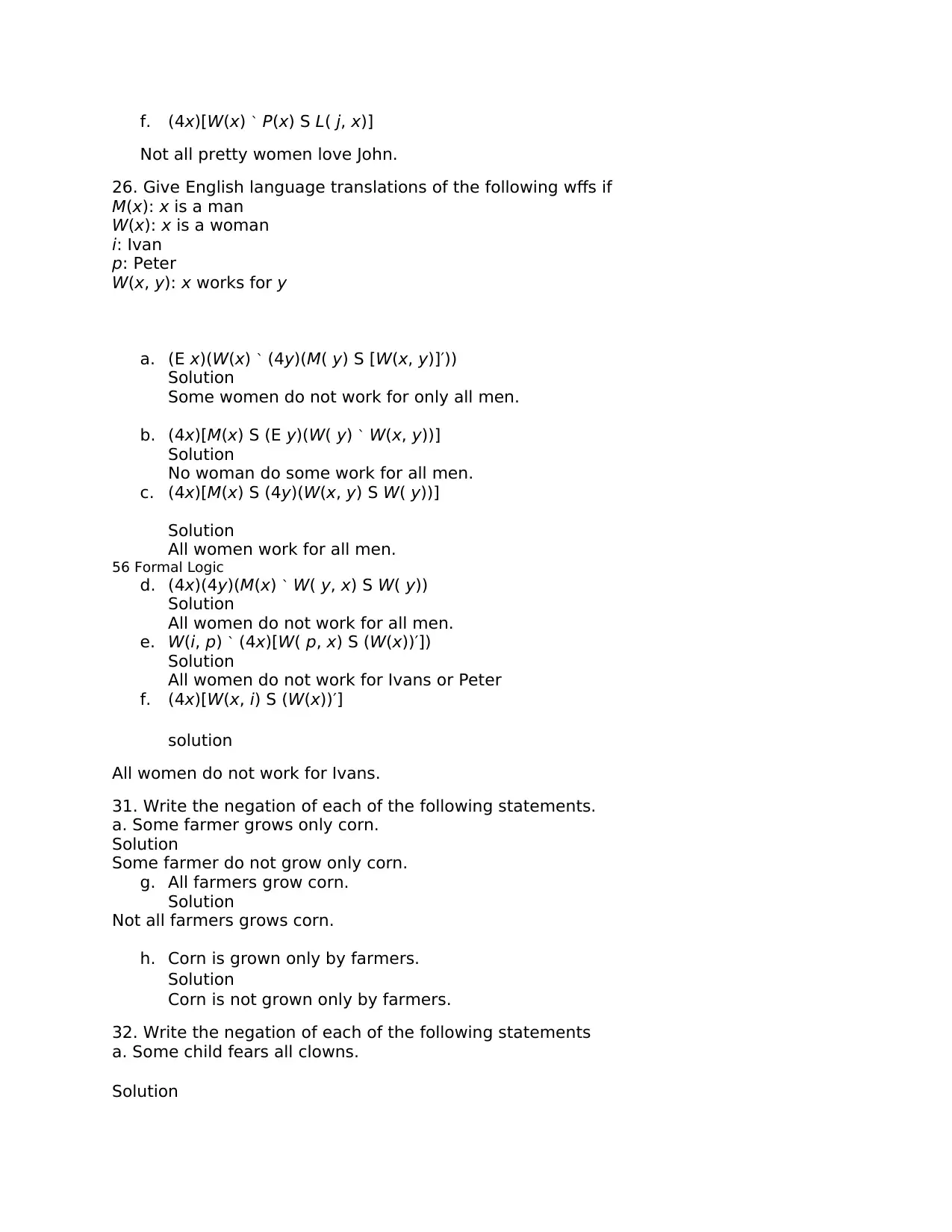Formal Logic Assignment: Truth Values, Predicate Logic, and WFFs
VerifiedAdded on 2022/11/24
|5
|1623
|302
Homework Assignment
AI Summary
This assignment delves into the core concepts of formal logic, presenting solutions to problems involving truth values within specific interpretations and domains. The assignment explores the evaluation of well-formed formulas (wffs) using both integer and state-based domains, determining their truth or falsity. It also tackles predicate logic, including the use of quantifiers (∀ and ∃) to represent statements about the world, such as relationships between states and the properties of objects. Furthermore, the assignment covers the translation of English language statements into predicate wffs and vice-versa, enabling a deeper understanding of logical equivalency and the construction of logical arguments. The solutions include negations of statements, demonstrating a comprehensive understanding of the subject matter.
1 out of 5





